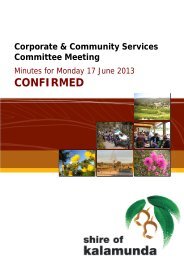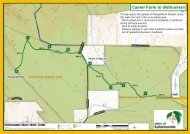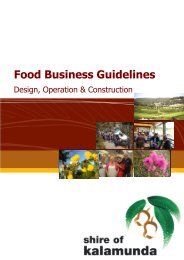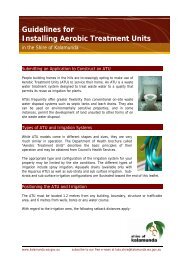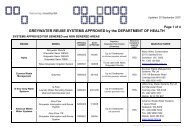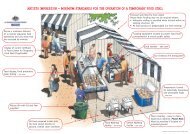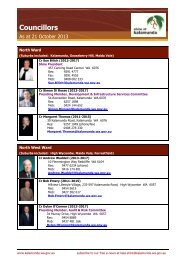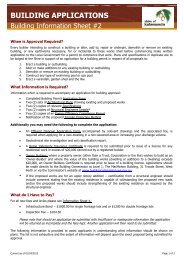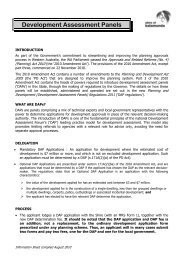Local Biodiversity Strategy: - Shire of Kalamunda
Local Biodiversity Strategy: - Shire of Kalamunda
Local Biodiversity Strategy: - Shire of Kalamunda
Create successful ePaper yourself
Turn your PDF publications into a flip-book with our unique Google optimized e-Paper software.
The economic values <strong>of</strong> protecting the remaining biological resources are vast.<br />
Some <strong>of</strong> these costs have now been estimated. The Commonwealth Scientific and<br />
Industrial Research Organisation (CSIRO), for example, have estimated the cost <strong>of</strong><br />
rehabilitating degraded ecological systems at around $1 billion annually.<br />
Addressing environmental degradation can be extremely expensive so it is better<br />
to try to prevent degradation occurring to reduce long term costs. If prevention <strong>of</strong><br />
degradation is impossible, then costs can be reduced by strategic and timely<br />
conservation actions with regard to protection <strong>of</strong> natural areas and rehabilitation.<br />
The conservation <strong>of</strong> biodiversity has ethical benefits. The presence <strong>of</strong> a wide<br />
range <strong>of</strong> living organisms reminds people that they are but one interdependent<br />
part <strong>of</strong> Earth. The Earth belongs to the future as well as the present; no single<br />
species or generation can claim it as its own. This is an idea that has been<br />
reflected in the vision statement drafted by the Steering Group (refer to Section<br />
6).<br />
<strong>Biodiversity</strong> is likely to have values that are unknown to us today but will present<br />
opportunities to future generations <strong>of</strong> West Australians, and these opportunities<br />
should be protected through a precautionary approach to minimise impacts from<br />
today’s activities.<br />
4 Threats to the <strong>Shire</strong> <strong>of</strong> <strong>Kalamunda</strong>’s <strong>Biodiversity</strong><br />
There are a number <strong>of</strong> threats to the management and ongoing viability <strong>of</strong> natural<br />
areas. They range from factors that can be controlled (e.g. weeds) to factors that<br />
are global or exist outside the land managers control (e.g. climate change,<br />
inappropriate fire regimes).<br />
The <strong>Local</strong> <strong>Biodiversity</strong> <strong>Strategy</strong> aims to address these threats through the<br />
incorporation <strong>of</strong> land use planning controls, policy formulation and on-ground<br />
management. The main threats to biodiversity in the <strong>Shire</strong> <strong>of</strong> <strong>Kalamunda</strong> are detailed<br />
below.<br />
4.1 Subdivision and Development Approval<br />
Until recently, biodiversity conservation has not been considered an important aspect<br />
in land use planning. Activities such as subdivision have therefore led to widespread<br />
clearing <strong>of</strong> endemic vegetation. This is apparent where urban areas have been<br />
subdivided and the retention <strong>of</strong> areas with biodiversity conservation value has not<br />
been considered a priority. It is apparent that degradation <strong>of</strong> remnant vegetation has<br />
occurred where rural zones have been changed to special rural zones and led to<br />
smaller lot sizes, without the retention <strong>of</strong> vegetation.<br />
Protection <strong>of</strong> biodiversity needs to be considered in the early stages <strong>of</strong> the land use<br />
planning process. This consideration will require detailed desktop assessment during<br />
the structure planning phase <strong>of</strong> subdivisions.<br />
Land capability analysis is required during subdivision <strong>of</strong> land zoned for special rural<br />
and rural composite uses. This analysis must consider retention <strong>of</strong> remnant<br />
<strong>Local</strong> <strong>Biodiversity</strong> <strong>Strategy</strong> Page 17



